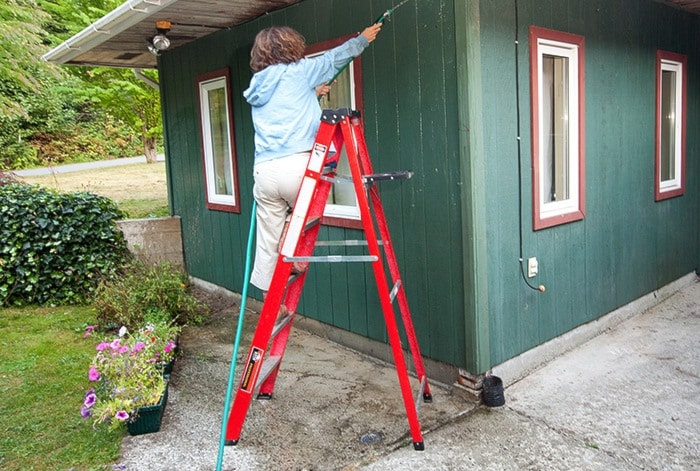As the leaves begin to fall, the smell of autumn brings to mind familiar memories of back to school for our kids and back to business for those of us getting serious about home renovation and upkeep.
Just like school, home maintenance is difficult to avoid and do-it-yourself gurus sound a lot like teachers as they lecture us to just get down to work.
On the top of that September back-to-work list is painting the house exterior, and the weather forecast for Maple Ridge and Pitt Meadows is ideal for picking up a paintbrush this week.
Whether you are thinking of selling now or far off in the future, it's important to keep the outside of your home healthy. A good paint job is one of the most obvious selling features when putting your home on the market.
So get out your pens and jot down a few notes. And get ready for a quiz or two.
"Don't be afraid to ask questions," says Vicky Tomlinson, who mixes paint at Maple Ridge's General Paint store.
"People are sometimes surprised by how many questions we ask them," she says with a laugh. "But we would prefer they ask questions than have to paint over again."
Those questions vary from what kind of siding material is on your home to what kind of brushes you will use.
One of the most important questions she'll ask is, what time of day do you plan to paint?
Painting in weather that is either too hot or too cool is the No. 1 reason your paint job may fail. Paint will peel if the weather is too hot and won't adhere in the first place if the wood is still damp.
During these days of late summer and early autumn, it's important to wait until the dew is off the wood, but not long enough for the strong heat to hit.
"It's a short window of opportunity," Tomlinson says, but urges people to get to work because if the exterior is not painted now, you may as well wait until next May, when the dew point is once again best for painting.
To choose your colour scheme, take a tour around some of the community's newer neighbourhoods to see what's popular and might spark your interest, Tomlinson suggests.
"Tastes change so fast you have to find something you can enjoy for awhile when you choose," she says.
And there are a few vital things homeowners must do before even picking up a paintbrush.
First step is to prep your home. Start by examining your entire exterior, looking for peeling paint, split siding, mildew, rust, popped nails. Don't turn a blind eye to issues like mildew because it will show right through the paint.
If you are lucky you may get away with just washing your home using a soft car brush and your garden hose. If not, you will have to repair, scrape and sand trouble areas, then add a coat of primer to these spots, especially if you have exposed bare wood.
Some experts insist it's worth sanding and priming every exterior painting project. Teacher's pets?
Next, figure out what kind of paint is already on your home.
Tomlinson offers a quick trick to find out quickly. Take a small amount of nail polish remover and wipe it on the spot. If it peels off easily, you have latex paint. If it doesn't, then you likely have an oil-based paint and you need to go back to Step 1 and sand and prime your entire house.
Even if you aren't a keener, you will still have to take off screens, light fixtures and even your gutters and downspouts to make things easier.
But don't let this slow you down.
The second step is to get busy before that sun goes down.
Paint in the shade just after the sun moves. Start from the top and make your way down. You can use a sprayer, which will get the job done faster, but it will take more paint and is more difficult to control.
If you use rollers and brushes, make sure you don't have too much paint on the brush surface and put your cans of paint into one large bucket to get a more consistent paint colour.
And you get what you pay for. More expensive paint will dry better than the cheap stuff.
Trim should be painted separately at the end of your job with several coats to protect trim and windowsills from winter's onslaught.
This may all sound daunting, but like any project, the toughest part is getting started. Just do your homework and get to work and you'll get top marks.
